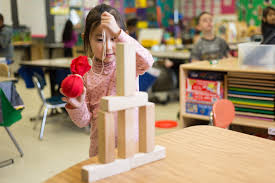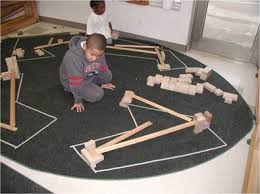Introduction and Importance in Facilitating Creativity
Engineering is a wonderful way to nurture creativity in young children. Through hands-on projects, kids get to design, build, and solve real-world problems. These experiences encourage them to think critically and creatively. Major (2018) explains that engineering helps children understand how things work, and they learn to innovate by testing their ideas, improving designs, and overcoming challenges. It’s about more than just building it’s about developing a mindset that encourages problem-solving, teamwork, and perseverance. Children who engage with engineering activities become creative thinkers, learning how to apply what they know in new and inventive ways.
Creativity Theories and Perspectives
In engineering, creativity emerges through trial, error, and continuous improvement. Piaget’s theory of cognitive development supports this process children learn by exploring and testing ideas. When they try to design a structure or fix a problem, they are actively engaged in creative thinking. Vygotsky’s sociocultural theory also fits well with engineering, as working with others helps children refine their creative ideas. Stone-MacDonald (2015) highlight how children learn critical problem-solving skills and creative thinking when they collaborate on engineering tasks, making creativity a social experience as much as an individual one.
Resources, Materials, and Digital Technologies
To bring engineering to life, educators can use construction materials like LEGO sets, K’NEX, and wooden blocks. These items give children the chance to experiment, build, and design their own creations. Zabawa (2019) suggests that these materials encourage children to think critically about stability and design. Digital tools, like TinkerCAD or LEGO Boost, let children create virtual models or even robots. These digital resources expand engineering learning by introducing children to design and programming, enhancing their creativity by combining technology with hands-on exploration (Stone-MacDonald, 2015).

Learning Experiences
0–2 years: Children explore stacking blocks to understand balance and symmetry (Berk, 2021).
2–3 years: Toddlers build with large blocks, learning about shapes, sizes, and structure (Major, 2018).
3–5 years: Children use blocks to build and test structures, learning about stability and design (Howard & Mayesky, 2022).
6–8 years: Children design and build a bridge using popsicle sticks or straws, testing its strength and modifying their design (Stone-MacDonald, 2015).
Critical Reflection and Evaluation
The stacking block activity for toddlers (2–3 years) was great for teaching balance, but some kids found it difficult to build stable structures. In the future, I’ll provide more guidance, perhaps showing examples of stable designs before they try building on their own. The bridge-building activity for children aged 6–8 was a creative challenge, but I noticed some teams struggled with dividing tasks. To improve, I’d encourage more brainstorming before beginning, which would allow the children to plan their roles and ideas. This would help them collaborate more effectively and feel more invested in the creative process.

